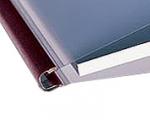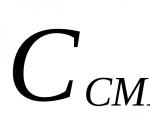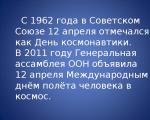Ancient seals of the Middle East. Cylinder seals Materials and processing techniques used by the Ancient Sumerians
Seals have long been used by peoples of various ancient civilizations, performing important functions in the life of society. . In different ancient cultures, there were different forms and types of such products, allowing for control and accounting, and document flow. will tell you what these products were like in ancient Mesopotamia.
Cylinder seals of ancient Sumerians
The tribes of the ancient Sumerians who lived on the territory of the Mesopotamia, located between the Tigris and Euphrates, created a developed civilization that left large number unique historical monuments, including the famous cylinder seals, which first appeared in the ancient capital of the Sumerian kingdom, the city of Uruk, mentioned in the famous Sumerian epic of Gilgamesh.
Archaeologists were surprised print size made of gypsum or limestone interspersed with lapis lazuli. Such seals were probably still made in large numbers from softer materials, such as wood and bone, which could not survive to this day. But their circulation is evidenced by a large number of prints that scientists found during excavations. They differed from the geometric images applied to the limestone samples.
The Sumerians created original print designs that allowed a long strip of images to be applied, while round stamp ensured the creation of an image limited in size and shape. The great need for products of this type testified to the developed commodity-money relations and trade in ancient Sumer. Using cylinder seals with individual inscriptions and images, they made records, certified their trade and other agreements, indicated that things belonged to a specific owner, and carried out active document flow in public administration. cylindrical type and clay tablets made it possible to establish complex system accounting and control that existed in ancient Sumer in the 3rd millennium BC. 
Judging by the number of remaining prints with inscriptions of various types, make a stamp from soft stone, bone or wood, representatives of various social strata, actively involved in economic relations. Later, the Sumerian cylinder seals became shorter and wider. A longitudinal hole appeared inside them in the 3rd millennium BC; they became widespread throughout Mesopotamia as a result of the development of copper smelting technology and began to make metal cylinders. Likely, buy a stamp, made of bronze, could only be afforded by very wealthy people and representatives of the state bureaucracy, since bronze, which included copper, was a very expensive material. Bronze drills made it possible to process stone or bronze alloy faster than the previously used corundum.
Today you can order print online with any image on it to anyone who wants it. Thanks to the use of digital technologies, you can quickly create a seal yourself with any original print and any shape. To do this you should use online constructor seals and stamps, with the help of which an original print sketch is selected. A variety of original prints are required not only for maintaining business records. An original image will help to distinguish author's works from the mass of other products on the market, stamp a collection of books in personal library, apply your personal stamp on the surface of various products to indicate their belonging to a specific person. After drawing up the original design project, it will be possible download print onto your own media and use the developed sketch to make an original print.
Ancient Mesopotamia. Scene of an audience with the goddess Ishtar.
The main, three-figure, scene depicts the worship of a seated goddess, and the additional one depicts the collection of dates from a palm tree. The subject of the seal - an audience with a seated deity - is one of the typical for Western Asian glyptics of the 3rd millennium BC, starting from Akkadian times. The goddess sits on a throne made in the form of a high chair with a small back. On the side panel of this chair are depicted two rearing lions, their figures crossed. There is a small stand under the feet of the sitting goddess. The goddess is depicted in profile, in a long robe consisting of many frills, on her head is a horned tiara 1, which the carver showed from the front. Also visible are a long “braid” of hair going down the back, and six clubs - three on each side - “growing” from the shoulders of the goddess. In front of her we see two “visitors”: a man dressed in a long, smooth robe with fringe along the hem, and a god in a pleated dress. A figure in a frilled robe, standing directly in front of the goddess, holds a staff in his left hand and raises his right in a gesture of greeting. He is bearded and wears a typical male hairstyle - long hair, probably braided and styled in a neat bun tied with a ribbon at the back of his head. The person is accompanied by a male deity. God is dressed in a long dress that leaves his left shoulder exposed. His hair is styled in the same way as the character he is accompanying. He folded his hands at his waist, on his head was a tall horned tiara, depicted from the front, very different from the tiara of the sitting goddess - the horns on it were collected around a long cone-shaped “cap” and spaced apart from each other, while on the tiara of the goddess the horns were tightly folded on top of each other.
An additional scene shows two men reaching for fruit on a date palm.
Thanks to the attributes presented on the seal, one can identify the seated goddess with the Akkadian Ishtar in her warlike aspect: rearing lions are her sacred animals, warlike attributes behind the shoulders and in the hands of the goddess are maces and a trident.
The inscription says that the owner of the seal was a certain Magaga, sales agent by position.
1 Such clothing and headdress are typical for the depiction of deities not only in glyptics, but also in other forms of Mesopotamian art - relief, sculpture, applied art.
Publications:
- Tarasova A.A. Scene of an audience with the goddess Ishtar // The World in Miniature. Gems from the collection of the Pushkin Museum. A.S. Pushkin. M., 2012. pp. 24-25.
- R.M. Boehmer, Entwicklung der Glyptik während der Akkad-Zeit. Berlin, 1965, Kat. No. 952, Abb.383.
- G. Colbow, "Die Kriegerische Ištar". Zu den Erscheinungsformen bewaffneter Gottheiten zwischen der Mitte des 3. und der Mitte des 2. Jahrtausends. Münchener Vorderasiatische Studien 8, München, 1991, Abb. 23, Taf. 4, Kat. No. 19.
- D.O. Edzard, Die Inschriften der altakkadischen Rollsiegel // Archiv für Orientforschung, Band 22. 1968/1969. S. 12-20, Nr. 22.
Cylinder printing- a small cylinder carved from stone with a longitudinal axial hole, which was used in the Ancient world as an identification card for the author of a document or a witness to its signing. The side surface of the cylinder (trucil) contained a unique stone carving, usually containing a religious plot. Cylinder seals became most widespread in Mesopotamia, where, starting from the Sumerian period, such a seal was the most important attribute of a person, always carried with him.
Manufacturing methods
Most cylinder seals were made in such a way that, when rolled over a soft material (such as wet clay), a raised image was obtained. The drawings and ornaments of the seal itself were made depressed. However, some cylinder seals, intended primarily for other written materials, were themselves made convex and were used, for example, to apply ink to a document made of parchment, papyrus, etc.
Spreading
Regions of distribution and finds of cylinder seals:
- Mesopotamia (dating to the Sumerian, Akkadian and Babylonian periods);
- Northern Caucasus (Maykop culture);
- Anatolia (belongs to the Hittite Kingdom, Mitanni and Urartu);
- Iran (belongs to Elam and the Achaemenids);
The vast majority of such seals were discovered in Mesopotamia due to the fact that the raw clay used there as a writing material was most suitable for the use of cylinder seals.
Application
Cylinder seal impressions have been found on a variety of surfaces, mainly on clay tablets, but also on clothing, amulets and a variety of other writing materials. Often, cylinder seals were rolled over pieces of clay sealing doors, vessels, etc. to confirm the inviolability of warehouses and supplies. Sometimes cylinder seals were very widespread, sometimes they were used only by the king, his closest associates and scribes.
Cylinder seals in Mesopotamia
Cylinder seals were most widespread and used in Mesopotamia, where they were an integral part of document flow. Among the cultures of this region, it was customary for transactions to be recorded on clay tablets with the participation of witnesses, with the seller, buyer and witnesses “signing” with their cylinder seals. Sometimes the transaction was certified by a local official, acting as a “notary.”
If a townsman lost his seal, it was customary to send messengers to different parts of the city, who shouted on every street about the loss of the seal by such and such a person and that such a seal was no longer valid.
A person's cylinder seal upon his death was usually placed with him in the grave, along with his other personal valuables.
Cylinder seals as a historical source
Cylinder seals are an important source for studying the history of states of the Ancient World. This is due to the fact that many of these seals, being made of stone, are well preserved and contain many unique scenes from religious rituals. The science of sphragistics studies images on seals.
Gallery
Comparison of stamp sizes with their stripe prints (modern/current prints)
Assyria. Stamps showing installation method; Brooklyn Museum Archives, Goodyear Archival Collection
Notes
Literature
- Nijhowne J.D. Politics, religion and cylinder seals: a study of Mesopotamian symbolism in the second millennium BC. - Oxford, England: Archeopress, 1999. - 126 p. -
Cylinder printing- a small cylinder carved from stone with a longitudinal axial hole, which was used in the Ancient world as an identification card for the author of a document or a witness to its signing. The side surface of the cylinder (trucil) contained a unique stone carving, usually containing a religious plot. Cylinder seals became most widespread in Mesopotamia, where, starting from the Sumerian period, such a seal was the most important attribute of a person, always carried with him.
Manufacturing methods
Most cylinder seals were made in such a way that, when rolled over a soft material (such as wet clay), a raised image was obtained. The drawings and ornaments of the seal itself were made depressed. However, some cylinder seals, intended primarily for other written materials, were themselves made convex and were used, for example, to apply ink to a document made of parchment, papyrus, etc.
Spreading
Regions of distribution and finds of cylinder seals:
- Mesopotamia (dating to the Sumerian, Akkadian and Babylonian periods);
- Northern Caucasus (Maykop culture);
- Anatolia (belongs to the Hittite Kingdom, Mitanni and Urartu);
- Iran (belongs to Elam and the Achaemenids);
The vast majority of such seals were discovered in Mesopotamia due to the fact that the raw clay used there as a writing material was most suitable for the use of cylinder seals.
Application
Cylinder seal impressions have been found on a variety of surfaces, mainly on clay tablets, but also on clothing, amulets and a variety of other writing materials. Often, cylinder seals were rolled over pieces of clay sealing doors, vessels, etc. to confirm the inviolability of warehouses and supplies. Sometimes cylinder seals were very widespread, sometimes they were used only by the king, his closest associates and scribes.
Cylinder seals in Mesopotamia
Cylinder seals were most widespread and used in Mesopotamia, where they were an integral part of document flow. Among the cultures of this region, it was customary for transactions to be recorded on clay tablets with the participation of witnesses, with the seller, buyer and witnesses “signing” with their cylinder seals. Sometimes the transaction was certified by a local official, acting as a “notary.”
If a townsman lost his seal, it was customary to send messengers to different parts of the city, who shouted on every street about the loss of the seal by such and such a person and that such a seal was no longer valid.
A person's cylinder seal upon his death was usually placed with him in the grave, along with his other personal valuables.
Cylinder seals as a historical source
Cylinder seals are an important source for studying the history of states of the Ancient World. This is due to the fact that many of these seals, being made of stone, are well preserved and contain many unique scenes from religious rituals. The science of sphragistics studies images on seals.
Write a review about the article "Cylindrical printing"
Literature
- Nijhowne J.D. Politics, religion, and cylinder seals: a study of Mesopotamian symbolism in the second millennium BC. - Oxford, England: Archeopress, 1999. - 126 p. - ISBN 0860549984.
Links
|
||||||||||||||||||||||||||||||||||||||||||||||||
An excerpt characterizing the cylinder seal
XBut a strange thing is that all these orders, concerns and plans, which were no worse than others issued in similar cases, did not affect the essence of the matter, but, like the hands of a dial in a watch, separated from the mechanism, spun arbitrarily and aimlessly, without affecting the wheels.
Militarily, the ingenious campaign plan that Thiers talks about; que son genie n"avait jamais rien imagine de plus profond, de plus habile et de plus admirable [his genius never invented anything deeper, more skillful and more amazing] and regarding which Thiers, entering into polemics with Mr. Fehn, proves that the drawing up of this ingenious plan should have been dated not to the 4th, but to the 15th of October, this plan was never and could not be executed, because there was nothing close to reality. The fortification of the Kremlin, for which it was necessary to demolish la Mosquee. [mosque] (as Napoleon called St. Basil's Church), it turned out to be completely useless. Laying mines under the Kremlin only contributed to the fulfillment of the emperor's desire, upon leaving Moscow, for the Kremlin to be blown up, that is, for the floor on which the child was killed to be beaten. Persecution of the Russian. The army, which so concerned Napoleon, presented an unheard-of phenomenon. The French military leaders lost the sixty-thousandth Russian army, and only, according to Thiers, the art and, it seems, also the genius of Murat managed to find, like a pin, this sixty-thousandth Russian army.
Diplomatically, all of Napoleon’s arguments about his generosity and justice, both before Tutolmin and before Yakovlev, who was primarily concerned with acquiring an overcoat and a cart, turned out to be useless: Alexander did not accept these ambassadors and did not respond to their embassy.
From a legal point of view, after the execution of the alleged arsonists, the other half of Moscow burned down.
Administratively, the establishment of the municipality did not stop the robbery and only brought benefit to some individuals who participated in this municipality and, under the pretext of maintaining order, robbed Moscow or saved theirs from robbery.
In terms of religion, things that were so easily arranged in Egypt by visiting a mosque did not bring any results here. Two or three priests found in Moscow tried to carry out the will of Napoleon, but one of them was beaten on the cheeks by a French soldier during the service, and the French official reported the following about the other: “Le pretre, que j"avais decouvert et invite a recommencer a dire la messe, a nettoye et ferme l"eglise. Cette nuit on est venu de nouveau enfoncer les portes, casser les cadenas, dechirer les livres et commettre d "autres desordres." ["The priest, whom I found and invited to begin serving mass, cleaned and locked the church. That same night they came again breaking doors and locks, tearing books and causing other disturbances.”]
In terms of trade, there was no response to the proclamation to the hardworking artisans and all peasants. There were no hardworking artisans, and the peasants caught those commissars who went too far with this proclamation and killed them.
With regard to entertaining the people and troops with theatres, things were similarly unsuccessful. The theaters established in the Kremlin and in Poznyakov’s house immediately closed because actresses and actors were robbed.
Charity did not bring the desired results either. False banknotes and fake ones filled Moscow and had no price. For the French who collected booty, all they needed was gold. Not only were the false banknotes that Napoleon so graciously distributed to the unfortunate had no price, but silver was given below its value for gold.
But the most striking phenomenon of the invalidity of the highest orders at that time was Napoleon's efforts to stop the robberies and restore discipline.
This is what the army officials reported.
“Robberies continue in the city, despite orders to stop them. Order has not yet been restored, and there is not a single merchant conducting trade in a legal manner. Only sutlers allow themselves to sell, and only looted things.”
“La partie de mon arrondissement continue a etre en proie au pillage des soldats du 3 corps, qui, non contents d"arracher aux malheureux refugies dans des souterrains le peu qui leur reste, ont meme la ferocite de les blesser a coups de sabre, comme j"en ai vu plusieurs exemples".
“Rien de nouveau outre que les soldats se permettent de voler et de piller. Le 9 October.”
“Le vol et le pillage continuent.” Il y a une bande de voleurs dans notre district qu"il faudra faire arreter par de fortes gardes. Le 11 October."
[“Part of my district continues to be plundered by the soldiers of the 3rd Corps, who are not content with taking away the meager property of the unfortunate inhabitants who hid in the basements, but also cruelly inflict wounds on them with sabers, as I myself have seen many times.”
A cylinder seal appeared, used to certify ownership or enter into an agreement. These small objects made of stone or shells with a hole in the center for ease of wearing were finely carved with various designs; when such a cylinder was rolled over wet clay, a pattern remained on it. A lot of cylinder seals have been found, and their impressions on tablets and clay stoppers for jugs are even greater.
Cylinder seals of the Jemdet-Nasr period: 1) seal with the image of a sacred boat; 2) seal from the temple of Inanna in Uruk.
The first cylinder seals appear in Uruk layers V and IV. It would not be surprising if the surviving samples represented, perhaps, not yet very successful experiments of the Sumerian craftsmen in this exclusively in a difficult way stone carvings. But in fact it turned out that although they did not yet fully succeed in the subtlety of the repeating pattern, nevertheless, they were characterized by high skill, rarely achieved in subsequent centuries, as evidenced by the variety of subjects and the ingenuity of their decorative interpretation. Vigorous modeling and careful elaboration of individual figures give them all the qualities of carved relief.
The pictorial motifs and mythological symbols included in the composition of these drawings have been studied very carefully, and their meaning has now been partially clarified. The theme of religious compositions is dominated by appeals to two deities, who are never themselves depicted, but are symbolized by ideograms denoting their attributes. One god personifies, like the biblical Tammuz, the creative power of nature, graphically conveyed by certain plants and animals. Among the symbols of this god are an eagle, sometimes with a lion's head, and a snake. The second deity, who plays an equally significant role, is Inana, whose bizarrely shaped symbol (which some experts associate with the “gatepost” of a reed temple) later becomes, in pictographic writing, a sign for her name. The composition of the image on the seal may consist of only one decorative combination of these symbols. From time to time, when a religious rite (slaughter or bloodless sacrifice) is depicted on the seal, human figures appear. Apparently, the “king” is represented by a bearded character in a long pleated skirt, with a tiara and a “chignon” on his head, who is served by a priest, naked or in a skirt. The “king” carries some ritual objects to the reed temple or presides over the ceremonial feeding of sacred cattle. Flocks and herds are often depicted; they are protected from lions by such characters as the “man-bull” and the “lion-headed eagle” - images known to Sumerian art in subsequent eras. There are also wild animals: wild boars, deer, ibex and mouflon; from their figures heraldic emblems are composed, which significantly supplement the set of standard compositions used by seal carvers. Occasionally, secular subjects were developed, including scenes of military or hunting exploits of the “king”.
Many of the types of stones preferred by carvers are not found in Mesopotamia itself, which indicates trade relations with neighboring countries.
During the Jemdet-Nasr period, the art of carving on seals degraded somewhat; there was no longer the same care or accuracy of the image. Previously, carvers, for example, rarely used a drill and tried to hide traces of its use; Now, everywhere, the traces of the drill are striking, which is why the modeling of animal figures loses its former completeness. In addition, a new form of printing appeared: more elongated in relation to the diameter and completely covered with a clearly drawn geometric pattern.




